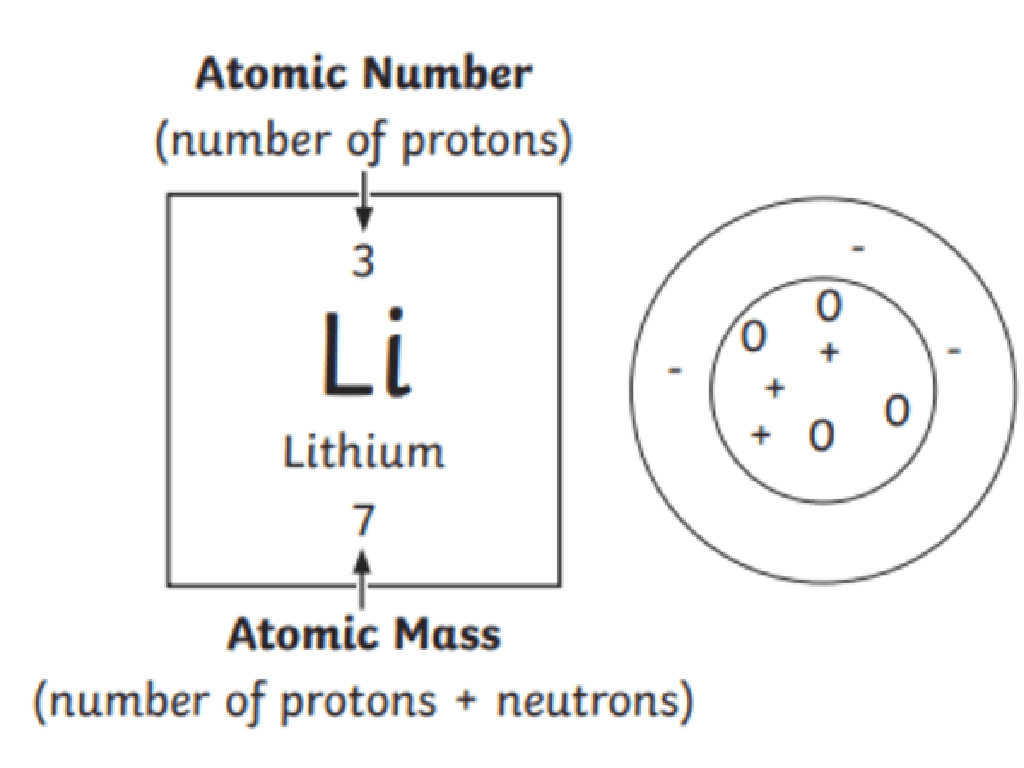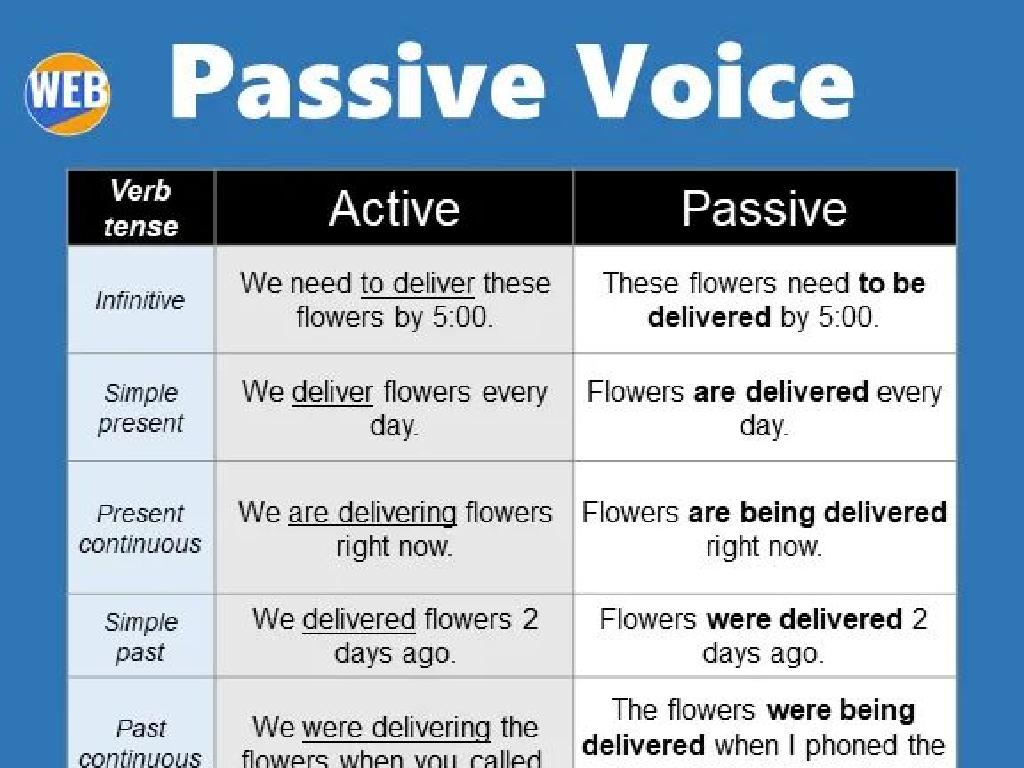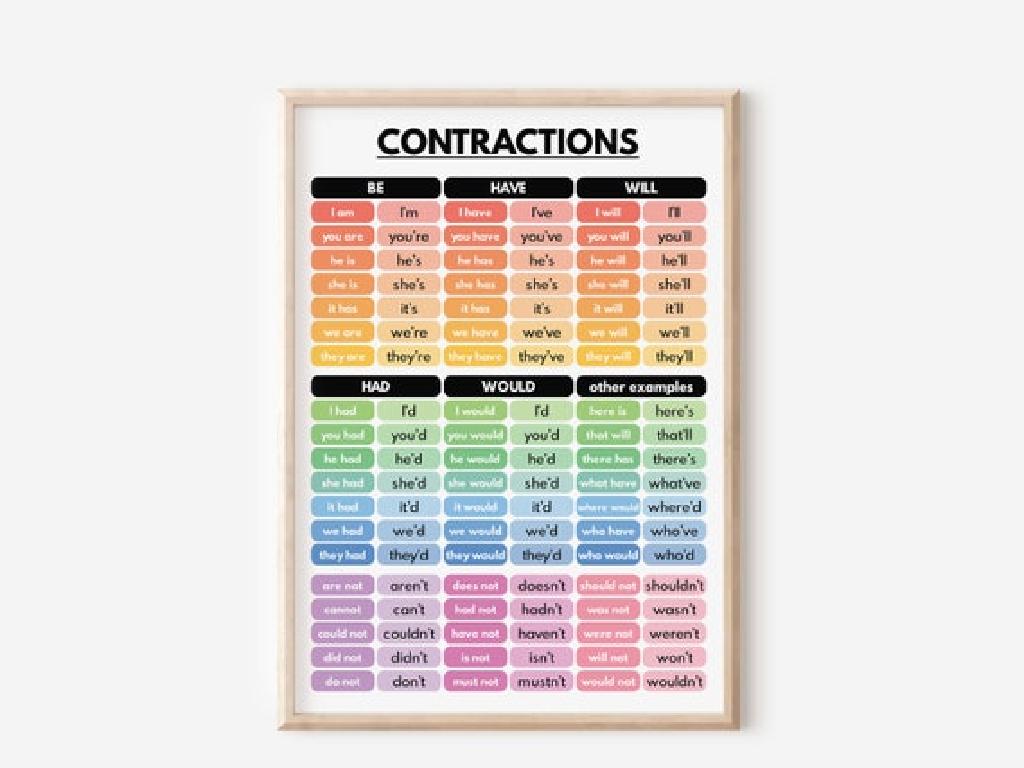Determine The Meaning Of A Word With A Suffix: Review
Subject: Language arts
Grade: Fourth grade
Topic: Prefixes And Suffixes
Please LOG IN to download the presentation. Access is available to registered users only.
View More Content
Exploring Suffixes: Expanding Vocabulary
– What is a suffix?
– A suffix is a letter or group of letters added to the end of a word.
– Types of suffixes
– Common suffixes include -ful, -less, -ness, and -ment.
– Suffixes alter meanings
– They can change a word’s tense, form a new word, or alter its meaning.
– Examples with suffixes
– ‘Hope’ becomes ‘hopeful’, showing possession of hope. ‘Care’ to ‘careless’, meaning without care.
|
This slide introduces the concept of suffixes to fourth-grade students, aiming to help them understand how adding a suffix to a word can change its meaning. Begin by defining a suffix and then discuss various types of suffixes and their functions. Provide examples of how suffixes can turn a noun into an adjective (‘joy’ to ‘joyful’), form a noun from a verb (‘refresh’ to ‘refreshment’), or indicate the absence of something (‘fear’ to ‘fearless’). Encourage students to think of words they already know and see how adding different suffixes can change their meanings. This will help them in expanding their vocabulary and improving their understanding of word formation.
Exploring Suffixes
– What is a suffix?
– A suffix is a letter or group of letters added to the end of a word to change its meaning.
– Common suffix examples
– For example, ‘-ful’ in ‘hopeful’ or ‘-less’ in ‘fearless’.
– Suffixes to learn today
– We’ll look at ‘-able’, ‘-er’, ‘-ness’, and ‘-ment’.
– Understanding suffix meanings
– Suffixes can turn a verb into a noun, or give a special meaning to a word.
|
This slide introduces the concept of suffixes to the students. Begin by defining a suffix and explaining how it alters the meaning of a word when it is added to the end. Provide common examples that the students might already be familiar with. Highlight the specific suffixes that will be the focus of today’s lesson, ensuring to choose ones that are appropriate for the fourth-grade level. Explain how suffixes can change the grammatical function of a word, such as turning a verb into a noun (e.g., ‘run’ to ‘runner’), or adding additional meaning (e.g., ‘joy’ to ‘joyful’). Encourage students to think of words they know that contain these suffixes and how the suffixes change the meanings of those words.
Understanding Suffix ‘-ful’
– What does ‘-ful’ mean?
– The suffix ‘-ful’ means ‘full of’ or ‘having’
– Examples: ‘joyful’, ‘hopeful’, ‘careful’
– ‘joyful’ means full of joy, ‘hopeful’ means having hope, ‘careful’ means full of care
– Create sentences with ‘-ful’ words
– Use ‘joyful’, ‘hopeful’, and ‘careful’ in your own sentences
– Practice makes perfect!
|
This slide introduces the suffix ‘-ful’ and its meaning to the students. Start by explaining that ‘-ful’ is added to the end of a word to indicate ‘full of’ or ‘having’ that quality. Provide examples like ‘joyful’, ‘hopeful’, and ‘careful’ to illustrate the concept. Then, engage the students in an activity where they create their own sentences using words with the ‘-ful’ suffix. This will help them understand how the meaning of the base word changes when the suffix is added. Encourage them to think of other words that end in ‘-ful’ and use them in different contexts. The practice activity will reinforce their understanding and help them remember the meaning of the suffix.
Understanding Suffix ‘-less’
– What does ‘-less’ mean?
– The suffix ‘-less’ means without or lacking.
– Examples: ‘fearless’, ‘endless’
– ‘Fearless’ means without fear, ‘endless’ means without end.
– ‘Helpless’ and its meaning
– ‘Helpless’ means without help or unable to do something.
– Classroom activity with ‘-less’
|
This slide introduces the suffix ‘-less’ and its meaning of ‘without’ or ‘lacking’. Start by explaining the concept of a suffix and how it changes the meaning of a word. Provide examples like ‘fearless’ (without fear), ‘endless’ (without end), and ‘helpless’ (without help). For the class activity, ask students to look around the classroom and find objects that can be described using words with the suffix ‘-less’. For example, a broken clock could be ‘timeless’, a dried-up marker could be ‘inkless’, or an empty backpack could be ‘bookless’. This activity will help students apply their understanding of the suffix ‘-less’ in a practical and engaging way. Encourage creativity and discussion about why they chose each object and word.
Exploring Suffix ‘-ness’
– What does ‘-ness’ mean?
– Suffix ‘-ness’ turns adjectives into nouns
– Examples: ‘happiness’, ‘kindness’, ‘darkness’
– ‘happy’ becomes ‘happiness’, ‘kind’ becomes ‘kindness’
– Group Activity: Create ‘-ness’ words
– Work together to invent words with ‘-ness’
– Focus on emotions for new words
– Use emotions like ‘sad’ to make ‘sadness’
|
This slide introduces the suffix ‘-ness’ and how it transforms adjectives into nouns, emphasizing the concept of states or qualities. Provide examples like ‘happiness’ from ‘happy’ and ‘kindness’ from ‘kind’. For the group work, guide students to think of adjectives, particularly those describing emotions, and help them add ‘-ness’ to create new nouns. Encourage creativity and discussion among groups about the meaning of their new words. This activity will help students understand how suffixes change word forms and meanings, enhancing their vocabulary and word formation skills.
Suffixes: Changing Word Meanings
– Suffixes alter word meanings
– A suffix is a letter or group of letters added to the end of a word to make a new word.
– ‘Help’ to ‘helpful’ or ‘helpless’
– Adding ‘ful’ means full of help, while ‘less’ means without help.
– Discuss meaning changes
– How do ‘helpful’ and ‘helpless’ differ in meaning?
– Practice with different words
|
This slide introduces the concept of suffixes and how they can change the meaning of a word. Start by explaining what a suffix is and then show how adding different suffixes to the same word, like ‘help,’ can change its meaning entirely. ‘Helpful’ implies providing support, whereas ‘helpless’ indicates a lack of support or inability. Engage the class in a discussion about these changes and encourage them to think of other examples. For the activity, have students come up with words and work in groups to add suffixes and discuss the new meanings. This will help them understand the power of suffixes in word formation.
Suffixes: Review and Practice
– Recap today’s suffixes
– Review the suffixes we learned, like -ful, -less, -ness, -ment.
– Match suffixes with words
– Find words in a list that fit with these suffixes.
– Discuss your matches
– Think about why they match and what the new word means.
– Share with the class
– Be ready to present your word-suffix pairs to everyone.
|
This slide is aimed at reinforcing the students’ understanding of suffixes and how they alter the meaning of root words. Begin with a quick recap of the suffixes covered in the lesson, ensuring that students recall their meanings and effects on words. Move on to a matching activity where students pair suffixes with appropriate root words, fostering their ability to manipulate and understand new vocabulary. Encourage them to explain their reasoning during the discussion, which will help solidify their grasp of the concept. Conclude with a sharing session where students present their findings, promoting active participation and peer learning.
Class Activity: Suffix Hunt
– Explore the classroom for words
– Choose suitable suffixes to add
– For example, ‘help’ becomes ‘helpful’ when we add ‘-ful’
– Think about the new word meanings
– How does the meaning change when you add ‘-ness’, ‘-ly’, or ‘-able’?
– Share your discoveries with the class
|
This interactive activity is designed to help students understand how suffixes alter the meaning of base words. Encourage the students to look for words on posters, books, and labels around the classroom. Once they find a word, they should think creatively about which suffixes could fit and what the new word would mean. For instance, adding ‘-less’ to ‘care’ creates ‘careless’, which has a different meaning than the original word. After they have selected their words and suffixes, ask them to present their findings, explaining how the meaning of the word changed with the suffix. This will help them grasp the concept of suffixes and their impact on word meaning. Provide guidance and examples as needed, and prepare to offer additional suffix options for students to consider.
Suffixes: Wrapping Up and Homework
– Congratulations on learning suffixes!
– Homework: Craft a short story
– Use at least 5 new words with different suffixes
– Include 5 words with suffixes
– Examples: ‘happily’, ‘runner’, ‘kindness’, ‘safely’, ‘teacher’
– Practice is key to mastery
|
Great work today, class! For homework, I want you to write a short story. Be creative and make sure to use at least 5 words that have suffixes. This will help you understand how suffixes change the meaning of a word and how they function in sentences. Remember, the more you practice, the better you’ll get at recognizing and using suffixes. We’ll share some of your stories in the next class, so get ready to showcase your amazing work!





